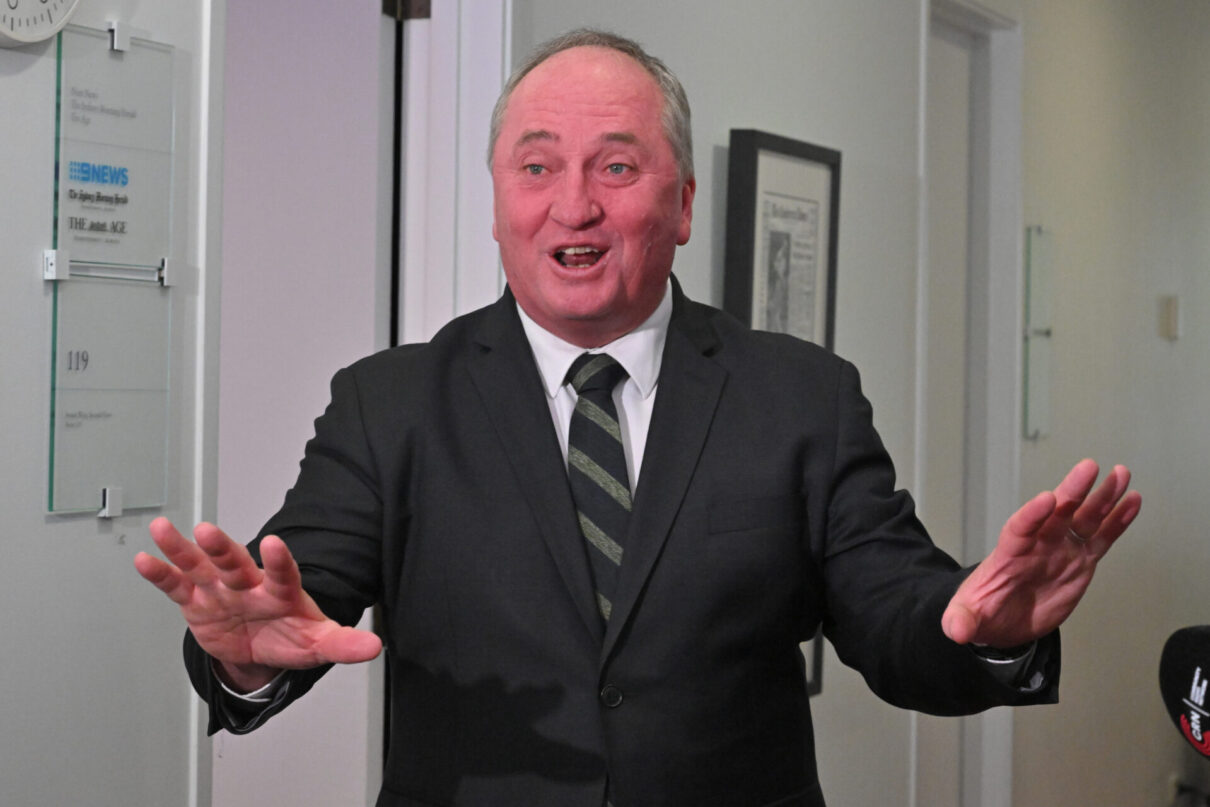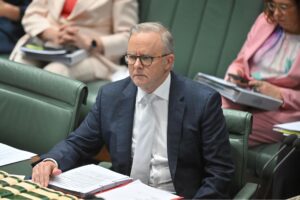Around this time 12 years ago, Barnaby Joyce stood up and declared the average family lamb roast was about to cost $100.
He had no evidence for this – just some spurious numbers around what he said a carbon price would cost – but it didn’t matter. As he wrote himself in Weatherboard and Iron, the claim took off.
Australia dumped the carbon price under the Abbott government and lamb hit record prices in 2025 – because of drought.
Joyce also claimed in 2014 that the “country would go broke” if the 2014 budget wasn’t passed (much of it wasn’t) and – surprise, surprise – the country is not broke.
But we never go back and check what is right or wrong in these debates, which is why people like Joyce can continue to make outrageous claims and have them reported as having the same weight as actual facts, with no responsibility or accountability for when it’s revealed as bullsh-t.
The Coalition did the same with the carbon price, a tax that was never a tax as admitted by one of the architects of the successful scare campaign, Peta Credlin herself years later.
Because that’s the thing – the people who deliberately muddy the waters through misinformation, cherry-picking facts or straight-up falsehoods then brag about their success, admitting they knew it was wrong, but hey, “that’s politics”.
They can do it time and time again, because every time they change the lie, it’s treated as a serious input into the debate.
David Littleproud, taking his cues from Joyce who has been on a victory lap for weeks – having dragged the Coalition to his position through the power of tantrum – has run to any microphone he can find to falsely claim the cost of transitioning to renewables will be $9 trillion.
The Coalition as a whole is grabbing onto this fake number, flooding the zone with $9 trillion worth of crap because it’s worked before.
It works because media is still stuck in a world where it repeats the lie, without calling out the lie immediately. That’s usually done later though factchecks, which while admirable, rely on the same people who heard the lie then hearing the usually more complicated truth.
We know they don’t. But we continue to report the lies as if they are a balanced contribution to a “debate” because, hey, that’s objectivity!
So even when the victors literally admit in their retellings the lies they told and how it worked, we keep falling for it under the guise of “telling both sides of the story”, as if there is another equal side to facts and truth.
So, even though the authors of the 2023 Net Zero Australia report that Joyce and his ‘baby muppets’ are using have said their numbers are being misused, and provided facts and context, this is treated as just another entry into the debate.
Network Ten’s Hugh Rimminton, a veteran of seeing these games play out, has attempted to address the misinformation. But again, it’s playing catch-up, relying on one truth to cut through 1000 lies.
There are some easy facts here: The baby muppets have deliberately been using a number out of context. They have done this countless times in the past.
Net Zero Australia updated its 2023 figures in a 2025 report that found Australia would need only $1.6 trillion a year in investment to meet its net zero goals by 2050 – which sounds like a lot, but it is only an additional $64 billion in investment annually.
Which is nothing for a country with a $1.8 trillion GDP and $735 billion in government revenue annually. And a reminder – this is investment. Which brings returns.
The baby muppets also deliberately neglect to tell people the cost of doing nothing. The National Climate Risk Assessment, released earlier this year, estimated the increase in national disasters alone would cost the the government $40 billion dollars annually.
The delay in the energy transition – because of the Coalition’s frequent tantrums against reality – is one of the reasons it’s getting more expensive.
Investment is not usually a sunk cost – businesses and people don’t tend to invest their money without at least the strong possibility of returns. In this case, the return in climate resilience technology was estimated by McKinsey to be $1 trillion by 2030.
The Coalition thought flogging off coal and gas energy assets was such a capital idea that it paid the states to do it. Now most of it is in private hands and – shock – costing too much money for a private company to justify running.
Now the Coalition is blaming Labor for the linear nature of time.
And crucially, the Nationals’ own electorates support the transition.
Recent polling showed just 17 per cent of people in renewable energy zones opposed local clean energy projects. Two-thirds supported them.
Which, of course, makes sense. Farmers know the land, they can see the changes and also, renewables is an opportunity for passive income. That’s something you would think a political party that is meant to represent the poorest electorates in the country should care about.
All of these lies really started taking off at the same time as newsroom across the country were hollowed out.
The mass media redundancies between 2010 and 2015 not only wiped out a generation of reporters, it also largely spelled the end of dedicated rounds reporters who knew their stuff and could call out the bullsh-t as it happened, in real time.
Their immeasurable niche and historical knowledge was lost, with a focus on general reporters with incrementalism and ‘sushi-train’ journalism rewarded in place of detailed policy explanations.
Part of that was in response to audiences moving away from legacy media sources, but most of it was in response to stingy media companies that wanted news to act as a business, rather than a public service.
Our national debate is poorer for it – and the toddlers are running amok.
Between the Lines Newsletter
The biggest stories and the best analysis from the team at the Australia Institute, delivered to your inbox every fortnight.
You might also like
The cruel housing hoax
Amy Remeikis and Bill Browne discuss the federal election campaign so far, the performance of the media, and how preferential voting actually works.
What conservatives do better | Between the Lines
The Wrap with Amy Remeikis If there is one thing you can bank on, it is that conservative governments know how to use power. They never shy away from it. If a conservative government wants to change something, it will, and it won’t worry about who it is annoying, or the pushback, or whether or
The election exposed weaknesses in Australian democracy – but the next parliament can fix them
Australia has some very strong democratic institutions – like an independent electoral commission, Saturday voting, full preferential voting and compulsory voting. These ensure that elections are free from corruption; that electorate boundaries are not based on partisan bias; and that most Australians turn out to vote. They are evidence of Australia’s proud history as an



